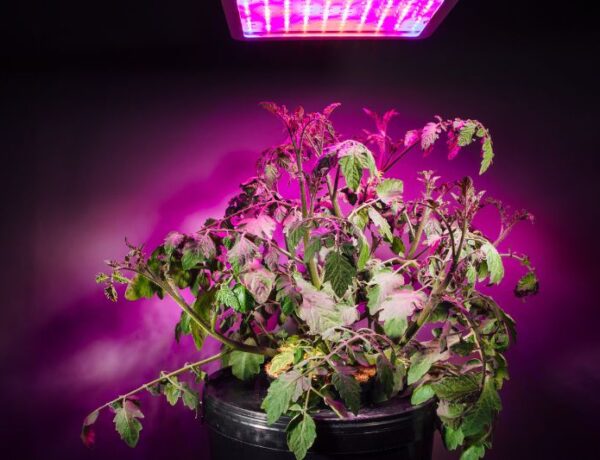Have you been wondering how to keep your indoor plants looking healthy and vibrant? Perhaps you’ve noticed some brown, wilted leaves that just don’t seem to fit in with the lush greenery. In this article we’ll talk about how to cut dead leaves from indoor plants, why it’s important, and its benefits. Plus, we’ll also delve into why sometimes cutting only parts of the leaves might be the right call.
Table of Contents
Why You Should Cut Dead Leaves from Indoor Plants
First things first, let’s understand why cutting dead leaves from your indoor plants is necessary. Dead or dying leaves don’t contribute to the health of your plant. Instead, they can be a drain on the plant’s resources. By removing them, you’re allowing your plant to direct its energy into creating new growth.
Dead leaves can also be a haven for pests and disease, and cutting them away can help to maintain the health and cleanliness of your plants. Not to mention, removing dead or dying foliage helps keep your indoor garden looking neat and tidy!
How to Properly Cut Dead Leaves from Indoor Plants
Now that we’ve covered the why, let’s dive into the how! Here’s a step-by-step guide to ensure you’re cutting those dead leaves the right way.
1. Identify the Leaves
Look for leaves that are fully brown or yellow. These are the leaves that have passed on from their prime and are ready to be removed. Some might be fully dead, others might be on their way.
2. Gather Your Tools
You’ll need a pair of clean, sharp pruning shears or scissors. Keeping your tools clean helps prevent the spread of disease between plants.
3. Make Your Cut
Cut the leaf stem as close as possible to the plant’s main stem, without damaging it. If the leaf is directly attached to the main stem, make a clean cut across the base of the leaf, making sure not to leave a stub.
4. Dispose of the Leaves
Once the leaves are removed, don’t leave them lying around. Dispose of them properly to prevent any potential spread of disease or pests. You can also add them to your compost bin, this way everything is repurposed!
5. Clean Your Tools
After the job is done, don’t forget to clean your tools again. This will keep them ready for the next pruning session!
When and Why to Cut Only Parts of Leaves
In some cases, you might only need to cut parts of a leaf, rather than the whole thing. If you see a leaf with only a small portion that’s brown or yellow, it might not be necessary to remove the entire leaf. The green part of the leaf is still photosynthesizing and contributing to the plant’s growth, after all!
When you’re cutting part of a leaf, the process is much the same as cutting a whole leaf. Use clean, sharp tools and make a smooth cut across the leaf, removing the dead or dying portion. It’s usually best to cut along a natural leaf line if one exists. That way, your cut blends in and helps maintain the plant’s natural shape.
The Benefits of Cutting Dead Leaves from Indoor Plants
Aside from redirecting energy to healthy growth and preventing the spread of pests and diseases, there are other benefits to keeping your indoor plants well-pruned.
- Aesthetics: A plant without dead or dying leaves simply looks better. It gives your indoor garden a neat, well-cared-for appearance.
- Plant Health: Pruning allows for better air circulation around the plant, reducing the chances of fungal diseases.
- Promotes Growth: Regular trimming can stimulate new growth, keeping your plant lush and vibrant.
Frequently Asked Questions About Cutting Dead Leaves from Indoor Plants
Here we’ll address some of the most common questions plant lovers have about cutting dead or damaged leaves.
No, once a leaf has turned brown, it cannot turn green again. The browning indicates that the leaf has died, and it’s best to prune it off.
In most cases, once a leaf has started yellowing, it will not turn green again because the yellowing usually indicates that the leaf is aging or dying.
Yes, you should cut dead leaves off plants. They drain energy from the plant and can harbor pests or disease.
Yes, you should remove damaged leaves, especially if the damage covers a significant portion of the leaf. If only a small part is damaged, you can choose to cut off just that portion.
Removing all leaves from a plant can stress the plant, as leaves are necessary for photosynthesis. However, some plants can survive and regrow if they’re healthy and the conditions are right. You should only do this if absolutely necessary, and never during the plant’s dormant season.
Yes, burnt leaves should be removed. They are damaged and no longer useful to the plant. However, ensure you also address the cause of the burning, such as too much direct sunlight.
Yes, you can trim the brown tips off of plants. This won’t harm the plant and will improve its appearance. Be sure to use clean, sharp scissors and cut at an angle to maintain a natural leaf shape.
If the brown tips are bothering you aesthetically, then by all means, trim them off. However, do investigate the cause of the browning tips as it could indicate an issue with watering, humidity, or nutrient deficiency.
Conclusion
Cutting dead leaves from indoor plants is an essential part of maintaining their health and beauty. It’s a simple task, and with the right tools and a little knowledge, you can easily take your indoor gardening skills to the next level. Remember, a well-pruned plant is a happy plant, so get pruning!






No Comments